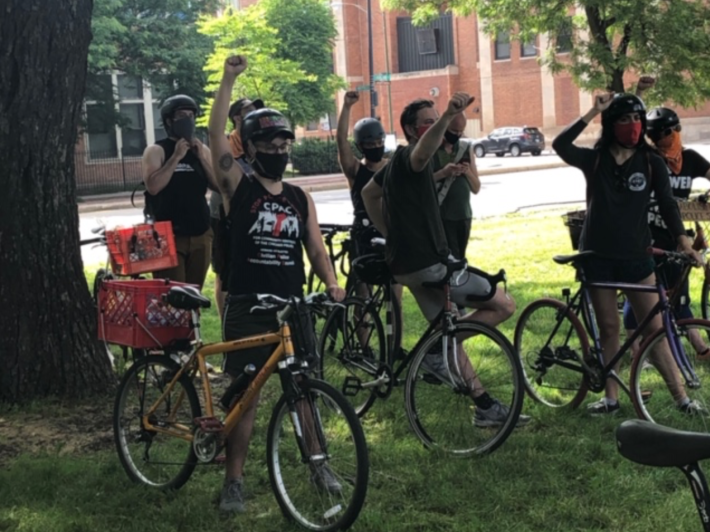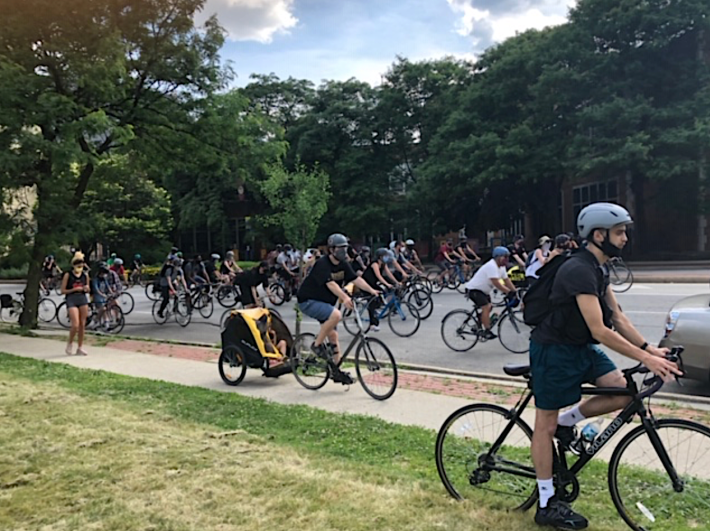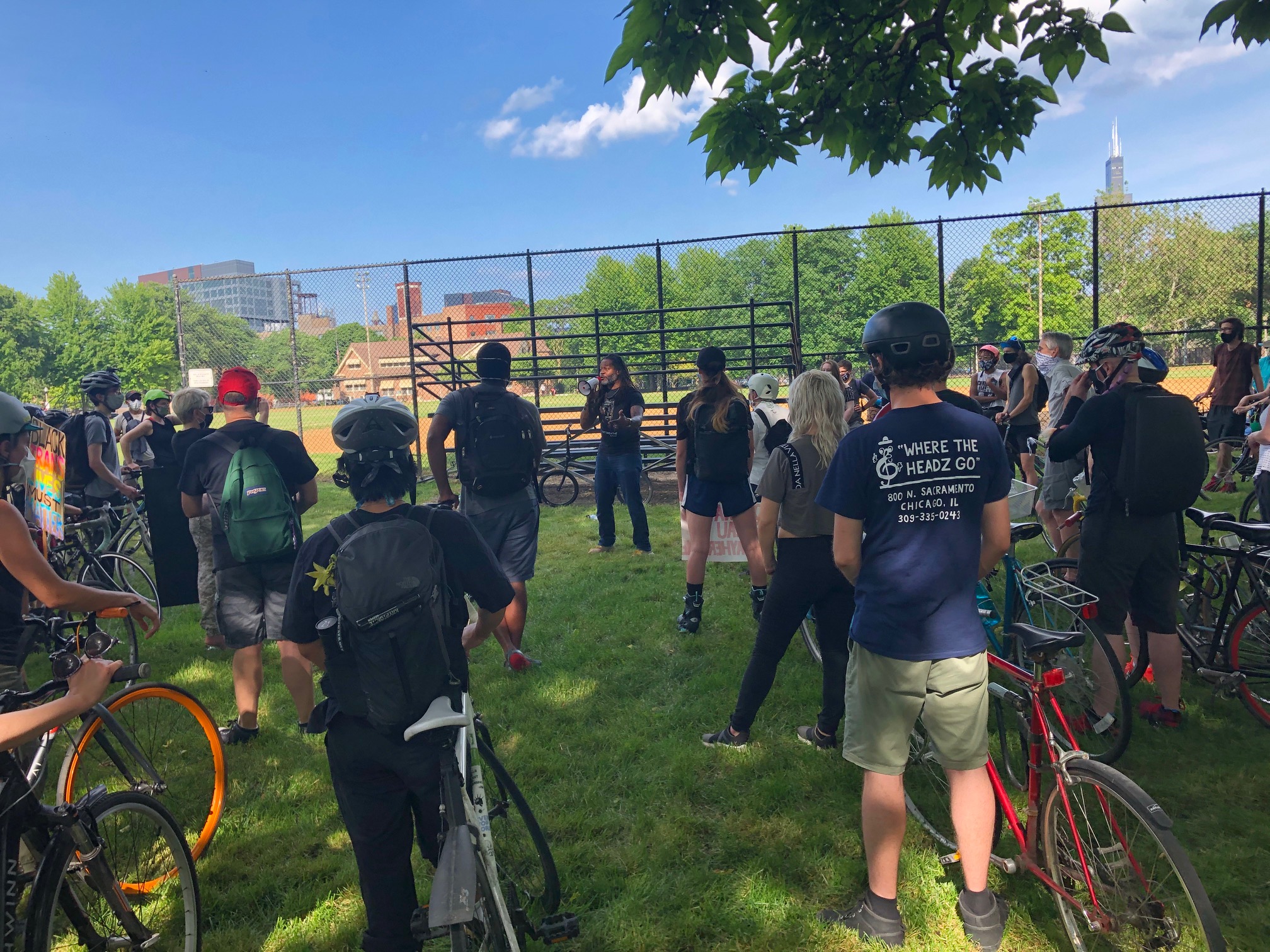During the recent demonstrations against police brutality, bike rides have become an increasingly common platform for protest. The Black Rides for Black Lives event that gathered on Saturday, June 27, in Chicago's Union Park, was a great example of the effectiveness of cycling as a vehicle for social change. "We are outraged that even in one’s own home, being Black could be a death sentence," stated the Facebook invite.
"One biker may not make a big difference, but five bikers, ten bikers, you notice," said co-organizer Lee Rayford. "When you're in the road, driving, you notice bikers, and so, the great thing about it is we have all of these bikers here, we're visible. [Drivers] are going to notice us. People are going to notice us. We have bells. We have music. It really draws the eyes."
The goal of the Black Rides demonstration was to demand the creation of a Civilian Police Accountability Council to oversee the Chicago Police Department, as well as reducing or eliminating funding for the CPD and reallocating the money to social services. Along with Rayford, organizers included Dayna Dane Jr., Matt Whalen, Marcus Will, Jessy Bacon, Rachel Reed, Xavier Reed, and Jessica Stein.
The peaceful protest did not endorse violence of any kind. Due to COVID-19 pandemic, participants were encouraged to bring and wear a mask throughout the event. They rode for eight miles to honor George Floyd, Breonna Taylor, Laquan McDonald, and others whose lives were lost due to police brutality.

"We're out here today because a man was killed in the streets of Minneapolis," said Toriano Sanzone, one of two people who spoke during the protest before everyone rolled out. "We're out here today because a man was shot in a Wendy's parking lot in the back. We're out here today because a woman was shot eight times in her house, sleeping. We're out here today because a man was shot jogging. That's why we’re out here today. We can go on and on and talk about all the tragedies against Black folks, but it's not about Black folks. This is a tragedy against humanity.”
According to Rayford, Black Rides came together organically. All the organizers had been involved with the Black Lives Matters protests that were happening across Chicago and the nation at the beginning of June.
"We were in a joint Facebook group together, and we felt the need to continue to organize, obviously, because we wanted to keep things rolling," Rayford said. "We wanted to keep the movement going. And a bunch of people responded to a thread on a protest, we came together, and that's how our little organization started."

In addition to the cyclists, the Black Rides event included medics and law students who volunteered to offer legal advice on location as well. In case of police arrest, riders were given the number of a lawyer’s guild to call. They were also advised to keep the number somewhere other than on their phones in the event that they were confiscated.
"I think [the funds currently going towards the police] should be relocated in a number of areas," said ride participant Ryan Lenhart. "Probably into the communities that are most hurt by the over-policing, a lot of West Side, South Side communities that really don't have the same investments... and resources as some other neighborhoods might." Lenhart mentioned the need to better fund quality education and healthcare, including mental health facilities, in underserved neighborhoods to make it accessible to all, as well as the need for better public legal representation.

Sanzone added that current policing money money should be reallocated to help people negatively impacted by the war on drugs. Rayford said funds should also go towards housing for individuals experiencing homelessness, as well as drug abuse rehabilitation programs.
"I think people need to know that this is not just a moment, it's a movement and we have to keep that up all the time and on a consistent basis and not just let this be a one-off,” said Sanzone. “You see all these people out here today who are willing to make that change and that difference, and that makes me super happy."
Rayford said he felt the bike protest was a complete success. Though police cars trailed the cyclists for the entirety of the ride, the event was completely peaceful, and effective in spreading the message about the need for police reform and funding reallocation. Read more about the CPAC movement here.






